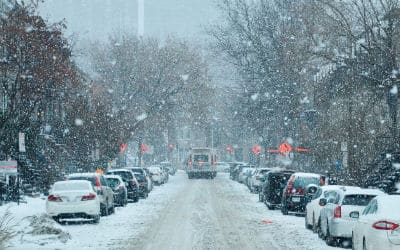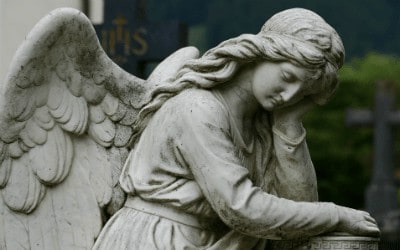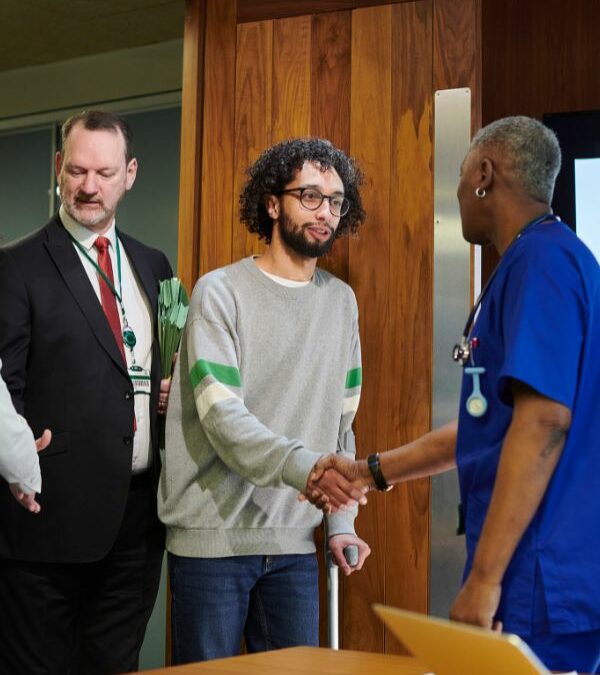There are two fundamental problems to this expert witness testimony.
The first problem is the expert witness typically is not a licensed doctor or chiropractor. Instead the expert is either a mechanical engineer, or a traffic reconstruction retired police officer. Neither of these experts have the necessary medical training to offer testimony about medical causation of injury.
The second problem is the expert is not telling the jury anything they don’t already know. Any individual intuitively knows that automobile collisions with extensive property damage are more likely to produce injury than automobile collision with little or no property damage. Therefore, the expert adds little to the jury’s knowledge.
A recent Motion in Limine was before a magistrate of the Franklin County Common Pleas Court. The magistrate in his preliminary ruling sustained the motion, not allowing the expert testimony. (Case settled before trial).
The defense offered expert testimony through a company Introtech . Their credentials as traffic reconstruction experts were valid. The court found however that the testimony did not add information to the juror’s knowledge.
1) The totality of the expert’s opinion is that the small force shown by his studies leads to small or no injuries. How is that outside of the lay persons’ knowledge or experience? A little hit normally hurts less than a big hit. Azzano v. O’Malley-Clements, 126 Ohio App.3d 368 (8th Dist.) at page 376 wherein the Court stated: “. . . we conclude that jurors are capable of determining whether a plaintiff has sustained injury in a collision when they are presented with information concerning the details of that collision.”
2) The common idea of lay people is that a car accident with minimal property damage means a small chance that someone could be injured. Hence, the expert’s testimony does not dispel a misconception but supports the common understanding of a typical lay person and is therefore not needed and/or duplicative of other evidence addressing the same topic; i.e., photographs of the damage, the parties’ testimony concerning the size of impact, etc.
Will the testimony even be helpful? Will it be redundant? If allowed to be given/heard, will it be unduly prejudicial to the Plaintiff in a Evid.R. 403 analyses?
All factors seem to weight against the testimony. (Decision Ward v Mitchell, et al., 17CV003533).
Other cases have found non-medical experts cannot offer testimony on medical causation issues.
In Smelser v. Norfolk Southern Ry. Co., 105 F.3d 299, 46 Fed. R. Evid. Serv. 468, 1997 FED App. 0033P (6th Cir. 1997), it was the plaintiff who proffered a biomechanical engineer to testify that a shoulder belt, not a lap belt, failed in an automobile accident, causing him injury. The Sixth Circuit found the expert’s opinion as to causation should have been excluded because it went beyond his expertise in biomechanics, and also lacked reliability. This was in part based on the biomechanical engineer’s admission:
“… that biomechanics are qualified to determine what injury causation forces are in general and can tell how a hypothetical person’s body will respond to these forces, but are not qualified to render medical opinions regarding the precise cause of a specific injury. He acknowledged that each individual person has his own tolerance level, and therefore, admitted he could testify only in general terms, i.e., that “X” forces would generally lead to “Y” injuries and “Y” injuries are consistent with those the plaintiff claims to have suffered.” [Emphasis added.]
In Azzano v. O’Malley-Clements, 126 Ohio App. 3d 368, 375–76, 710 N.E.2d 373, 377–78 (1998), the Appellate Court found reversible error in allowing any testimony by an expert with inadequate credentials, very comparable to credentials offered by Introtech employees.
Accident reconstruction is fundamentally different from biomedical engineering, and fundamentally different from medical training qualifying for stating a medical opinion.
“Cox testified that he is the chief executive officer of his Houston-based forensic engineering firm. He stated that since 1986, he has performed accident reconstruction and “biomechanical analysis,” which he defined as the “forces on the body, how the body responds to those forces.” He testified that the area is a hybrid between “engineering and medical” fields. Cox was also a police officer for five years and learned accident investigation. He had taken some engineering courses but did not complete his degree. He did not list any medical training. He stated that he had attended a conference which discussed human tolerance response to acceleration and has reviewed similar data in various journals. Cox also stated that he has done sixty to seventy impact tests in which **378 he measured structural deflection and body acceleration.
In this instance, he stated that the collision was “probably bumper to bumper.” He did not examine the cars involved in this collision but testified that he reviewed crash test data for Ford Tempos and Ford Rangers, which he obtained from the Internet, and also reviewed bumper standards issued by the federal government. He also conducted a crash test using a 1990 Chevrolet Lumina and a 1984 Ranger, and he admitted that the instant collision involved a 1993 Ford Tempo and a 1994 Ranger.
Cox testified that, based upon his review of papers which quantify muscle responses at crashes of various speeds, injuries generally occur where the occupants of a vehicle experience a 5.6 m.p.h. change in velocity. The papers were not identified and were not introduced into evidence, however. Cox opined that in this instance, the velocity change was less than five miles per hour. Further, despite the trial court’s initial determination that Cox could not testify as to what happens to the body in a collision, Cox stated that, based upon previous crash tests which he had performed, as well as “overwhelming literature,” “symptoms don’t occur” with this acceleration.
Reviewing this testimony within reference to Evid.R. 702, we note as a preliminary matter that no evidence was presented to demonstrate that Cox had ever been qualified to provide expert testimony in court. As to his specialized knowledge, skill, experience, training, or education regarding the subject matter, Cox has no degree in his field. Significantly, Cox has no medical training. It is clear that Cox had experience evaluating crash test information, but the crash tests which he conducted involved vehicles of different years or models than those operated by the parties herein. Cox stated that he obtained general crash test information concerning the types of vehicles from the Internet and federal bumper standards. These documents were not introduced into evidence, however.
Further, Cox admitted that the characteristics of the occupants, including their height, weight, and seating positions, can determine whether an injury will occur, but there was no evidence that he considered plaintiff Paul Azzano’s characteristics in this matter. Thus, we believe that while Cox may be qualified to perform accident reconstruction and to evaluate the forces interacting in a collision, he was not properly qualified to opine regarding the likelihood of bodily symptoms resulting from such collision.
Considering the next factor, we conclude that jurors are capable of determining whether a plaintiff has sustained injury in a collision when they are presented with information concerning the details of that collision. While expert testimony can be helpful, it is not required. Rather, the jurors, as determiners of credibility, must decide whether an injury claim is genuine. Moreover, Cox’s testimony was premised upon his claim that the accident was “probably bumper to bumper.”
Next, it is unclear to us whether Cox’s testimony was based in whole or major part upon his own observations, rather than the conclusions of others or other hearsay. Indeed, Cox testified that there is “overwhelming literature” indicating that symptoms of injury would not occur under the acceleration he calculated in this matter, but literature was not subject to cross-examination and supporting data were not identified or introduced.
Considering all of the foregoing, we must conclude that in this case, the trial court’s decision to admit the expert’s testimony was an abuse of discretion.” Azzano v. O’Malley-Clements, 126 Ohio App. 3d 368, 375–76, 710 N.E.2d 373, 377–78 (1998)
In Rybaczewski v. Kingsley, 1998 WL 200227 (Ohio Ct. App. 6th Dist. Lucas County 1998), on reconsideration in part, 1998 WL 372723 (Ohio Ct. App. 6th Dist. Lucas County 1998) the Appellate Court found “The most that (the biomechanical engineer) should have been permitted to testify to was the amount of force appellant experienced in the accident.”;
“We find that (the biomechanical engineer) did offer a “medical opinion” when he stated that Mr. Rybaczewski was not injured by the accident. This is a question that requires expert medical testimony by a physician. The most that King should have been permitted to testify to was the amount of force appellant experienced in the accident. Rybaczewski v. Kingsley, No. L-97-1048, 1998 WL 200227, at *6 (Ohio Ct. App. Apr. 24, 1998), on reconsideration in part, No. L-97- 1048, 1998 WL 372723 (Ohio Ct. App. June 29, 1998)
Impressive credentials are no substitute for a medical or chiropractic license. The plaintiffs’ expert in Gammill v Jack Gammill v. Jack Williams Chevrolet, Inc., 972 S.W.2d 713, Prod. Liab. Rep. (CCH) P 15362 (Tex. 1998), a professor of mechanical engineering who, (unlike most designated experts), had actually “conducted research in mechanics, dynamics, biomechanics, vehicle occupant kinematics, and vehicle occupant restraint systems” (id. at 716), while qualified to opine whether a seatbelt was defective, lacked any qualifications to testify as to the cause of an infant’s death in a car crash.
In Cromer v. Mulkey Enterprises, Inc., 254 Ga. App. 388, 562 S.E.2d 783 (2002), causation testimony was precluded despite the biomechanical engineer’s Ph.D. in physics, his 22 years of university study of the behavior of materials under different levels of stress, impact, and assault, his participation in seminars on low-speed automobile accidents, and his authoring a book on low-speed impacts and biomechanics.
Even if the expert has some medical education, this does not qualify him to render an injury-causation opinion. In Salerno v. Tudor, 2002 WL 120608 (Cal. App. 1st Dist. 2002), unpublished the biomechanical engineer, who had taught anatomy at Davis Medical School and worked in the spine clinic at California Davis Medical Center, testified that there was “no mechanism for a herniation— herniated disk” in the subject rear-end collision. Ruling this was improper, the appellate court stated:
Since Liptai was not a medical doctor, she was improperly providing the jury with assistance in determining the ultimate issue: whether the force could have caused Salerno to suffer a herniated disk. She had a specialized knowledge about the forces caused by the accident, but she did not have the training and experience to testify that Salerno did not suffer a herniated disk. [Emphasis added.]
The biomechanical expert in Combs v. Norfolk and Western Ry. Co., 256 Va. 490, 507 S.E.2d 355 (1998), besides being a professor of engineering, science and mechanics, and the director of biomedical engineering at Virginia Polytechnic Institute, had a bachelor’s degree in mechanical engineering, a Ph.D. in biomedical engineering, and a master’s degree in medical science. Yet the Virginia Supreme Court found he should not have been allowed to opine as to whether the plaintiff could have ruptured a disk in the subject car accident. Recognizing that the very concept of allowing this type of testimony purports to elevate the biomechanical engineer’s opinion over that of a physician who has examined, diagnosed and treated plaintiff, and equating the proposed testimony to practicing medicine (without a license) the Virginia Supreme Court wrote:
The practice of medicine includes the diagnosis and treatment of human physical ailments, conditions, diseases, pain, and infirmities. The term “diagnose” is defined as “to determine the type and cause of a health condition on the basis of signs and symptoms of the patient.” Mosby’s Medical Dictionary 480 (5th ed.1998). Thus, the question of causation of a human injury is a component part of a diagnosis, which in turn is part of the practice of medicine.
Schneck was qualified at trial as an expert in the field of biomechanical engineering and he was competent to render an opinion on the compression forces placed on Combs’ spine at the time of the incident. However, Schneck was not a medical doctor and, thus, was not qualified to state an expert medical opinion regarding what factors cause a human disc to rupture.
If the court decides to allow this type of testimony. There are several articles compiling medical research establishing there is no minimum threshold of property damage for injury. These articles emphasize that thousands of different configurations of the human body at the moment of impact make it impossible to predict injury based on property damage, where a different configuration at the time of impact, results in substantially increased vulnerability and probability of injury. Injury Threshold: Whiplash Associated Disorders, Journal of Manipulative and Physiological Therapeutics, Volume 23, Number 6, August 2000, Pages 420-427; Rear-end Impacts: Vehicle And Occupant Response , Journal Of Manipulative And Physiological Therapeutics, Volume 21, Number 9, Pages 629-639. Plaintiff’s expert can review these and refer to them, if he/she finds them to be reliable authority. Ohio Evid. R. 803 (18).
Conclusion
If you represent a plaintiff in a personal injury case with low property damage, and the defense offers expert testimony, you should file a Motion in Limine, to exclude this testimony.
If the court over rules the motion, consider having your medical expert witness refer to research articles explaining why there is no minimum threshold of property damage for personal injury.
-Charlles Bendig



